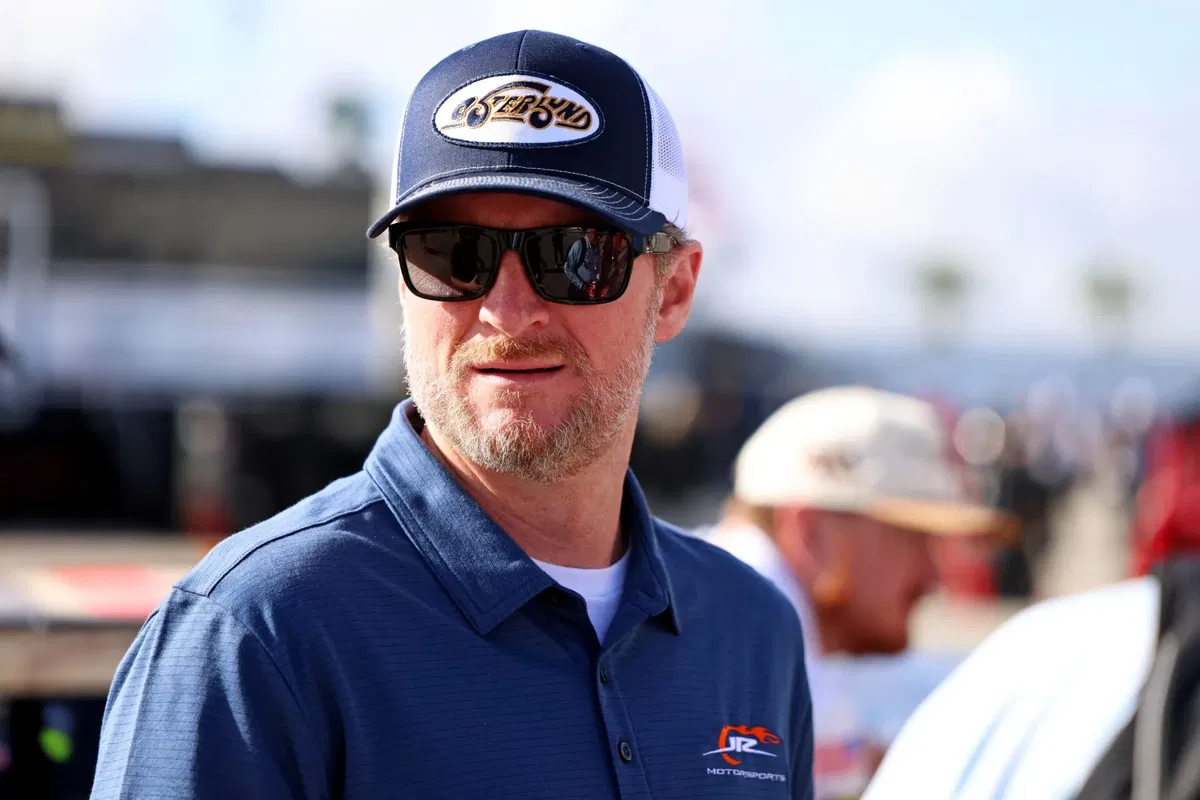
Imago
Credit: Peter Casey-Imagn Images

Imago
Credit: Peter Casey-Imagn Images
At Dover Motor Speedway, known as the “Monster Mile,” a race weekend’s excitement can quickly turn to mounting frustration. The 1-mile concrete oval, with its 24-degree banking, challenges NASCAR teams with punishing speeds, with average laps pushing 130 mph, 400 laps per race, and environmental conditions that push cockpit temperatures beyond 130°F. In the latest Cup Series event, the persistent struggle between rubber and concrete became evident: over 30 lead changes underscored the chaotic action, while frequent pit stops, with some drivers losing over 15% of tread in just a handful of laps, exposed the demanding nature of Dover’s abrasive surface.
Watch What’s Trending Now!
With tire issues dominating radio chatter and in-race strategy, Dale Earnhardt Jr.’s pointed critiques resonated through the sport, igniting debate about the track’s future and the realities of modern tire design at Dover.
ADVERTISEMENT
Dale Jr. unfiltered: Concrete woes, friction stats, and the tire dilemma
On the recent episode of Dale Jr. Download podcast, Dale Earnhardt Jr. did not attempt to hide his frustration following the latest Dover race, zeroing in on how the concrete surface consistently turns tire grip into a race-day crisis rather than a strategic unknown. He highlighted, “I think they’re fighting, you know, fighting against the surface and concrete and how difficult it is for the drivers to really get grip at that racetrack, and how bad that grip nose dives when you get behind another car. It’s really horrific on a concrete surface; it’s just worse than pavement.” This statement comes as field-wide data continues to support his viewpoint. By Lap 40 at Dover, tire falloff typically exceeds 20%, causing lap times to drop by over 1.5 seconds per lap. This is largely due to Goodyear’s current compound, which prioritizes durability and environmental sustainability over pure racing performance.
Earnhardt Jr detailed how heat saved the day, stating, “It would have been much worse to pass had it been cooler. Tire wear would have been even more of a problem.” In hot conditions, the track “rubbers in” faster, which helps the surface retain some grip instead of turning into a “cheese grater” that shreds tires corner after corner. Yet, despite Goodyear’s ongoing efforts to update its product, Earnhardt connected the struggle back to the concrete itself.
He pointed out on the podcast that the revised tire compound, while safer and greener, lacks critical ingredients, chemicals, and oils once added for flexibility and grip that have been stripped to meet modern standards. This change means that on cooler days, rubber doesn’t stick, turning every corner into a battle against excessive wear and “balling” rubber marbles thrown high up the track. Overtaking becomes nearly impossible: Daniel Suarez holding off the leader just to stay on the lead lap became emblematic of a wider problem.
ADVERTISEMENT
Earnhardt’s frustration also ties to NASCAR’s broader tension between tradition and innovation. While Dover’s concrete surface symbolizes the track’s identity and history, the practical consequences in today’s racing environment with the NextGen cars and their associated tires make the status quo less tenable. In his frank words, “The things that I think I would do at Dover if I could just snap my finger aren’t realistic. They’re not going to pave it with asphalt.”
The Monster Mile’s identity is deeply tied to its unique concrete surface, something Earnhardt thinks NASCAR is unlikely to change. “They’re never going to move away… This concrete surface being unique, you know—they’re going to keep it. They won’t believe for a minute that we’d have a better of a product on asphalt.” As the tire fiasco played out, drivers relied on pit crews and staggered pit cycles more than wheel-to-wheel skill, with eight cautions and nearly 20% of laps run under yellow in recent races. These numbers speak of a growing disconnect between racing tradition and competitive spectacle at Dover.
ADVERTISEMENT
Top Stories
Dale Jr. Warns of Deeper Issues as Joe Gibbs Parts Ways With Decade-Long Executive
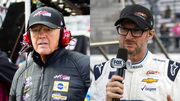
Chase Elliott’s Popularity Hits New Low as Dale Jr.’s Daytona 500 Return Triggers Record-Breaking Sale
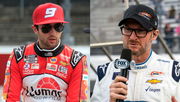
Richard Childress & Johnny Morris Make Patriotic Power Moves Days After Causing NASCAR’s Collapse in Courtroom
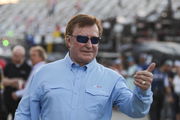
“Shouldn’t Keep His Job”: Dale Earnhardt’s Long-Time Sponsor Demands Steve Phelps’ Ouster After Disgracing Richard Childress
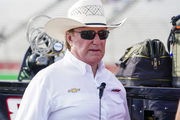
What Is NASCAR’s 5-Strike Rule That Could Change Its Future? Check All Details Here
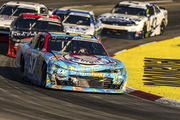
Dale Earnhardt Jr. at Dover: legacy and memorable performances
Dale Earnhardt Jr.’s history at Dover reveals a nuanced relationship with the “Monster Mile.” He started 35 Cup races at Dover between 2000 and 2017, notching 1 career win in 2001 MBNA Cal Ripken Jr. 400, 8 top-five finishes, 13 top-10s, and led 475 total laps at the track. Captured his only Dover pole in fall 2013, setting a blistering qualifying record of 161.849mph and leading 80 laps; that race finished 2nd to Jimmie Johnson.
His 2001 win at Dover stands out as one of the defining moments of his career and NASCAR history. Earnhardt took the checkered flag, then performed an iconic victory lap with a waving American flag, cementing a lasting symbol of resilience and unity in the wake of the national tragedy of 9/11. Despite only a single victory, Earnhardt was consistently competitive at Dover, frequently qualifying in the top 10 and averaging a finish of 15.8 at the “Monster Mile.”
ADVERTISEMENT
“No way to describe our 2001 win at the @MonsterMile other than emotional. A day and experience I will never forget.” He said in an X post. His memorable runs included leading over 50 laps in multiple events and battling for the win well into the closing stages. However, like many drivers, he was not immune to Dover’s brutality, suffering a concussion from a crash in 2003 and several races spoiled by tire issues or mechanical drama.
No way to describe our 2001 win at the @MonsterMile other than emotional. A day and experience I will never forget. #Appreci88ion pic.twitter.com/0JYcYVdxJL
— Dale Earnhardt Jr. (@DaleJr) September 27, 2017
Earnhardt’s voice carries weight at Dover not only as a commentator but as a driver who intimately experienced its triumphs and frustrations, a legacy now reflected in his passionate calls for change.
ADVERTISEMENT
ADVERTISEMENT
ADVERTISEMENT
ADVERTISEMENT

